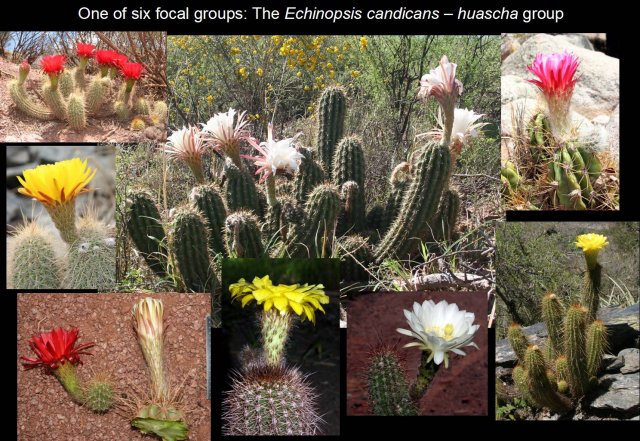Dr. Boris O. Schlumpberger
|
| DFG-funded project "Evolution of
pollinator specialization and despecialization in Echinopsis (Cactaceae,
Trichocereeae)"
|
When plant species disperse to new habitats, they often
encounter a new pollinator fauna and undergo changes in floral morphology resulting from
divergent pollinator selection regimes.
This is thought to contribute to species formation when the divergent forms
later come into secondary contact but can no longer produce fit offspring.
The proposed research will examine pollination in six small clades of
Cactaceae, each with a 3-5 very closely related species (divergent sets of populations), in
order to examine which morphological and physiological flower traits correlate with shifts
between bee, hummingbird, and hawkmoth pollination.
The focal clades, which belong to the large genus Echinopsis
(Trichocereeae), were selected because preliminary data suggest that pollinators play a role in
species divergence and reproductive isolation; there are also cases of apparent bimodal
pollination strategies.
We hypothesize that shifts from hawkmoth to bee pollination are relatively
easy, while shifts from bee to bird or hawkmoth pollination are more difficult.
All three pollination syndromes involve numerous traits besides the actual
rewards (nectar and/or pollen), and this project will focus on changes in floral scents that
correlate with the six possible directions of pollinator change.
By focusing on several small clades we will be able to combine field
observations at several sites with species/population-level phylogenetic analyses and
biochemical analyses of floral odor.
Together, these components will allow to assess whether more derived
(younger) species tend to rely on fewer pollinators and thus are more specialized or whether on
the contrary they rely on more kinds of pollinators and thus stay, or become, unspecialized.
This will be only the second study to address this question and the first to
assess the role of odor bouquets in the broadening or narrowing of pollinator spectra.
|

For enlargement (1488 x 1025 pixels = 359,268 bytes) click on the poster.
|
|